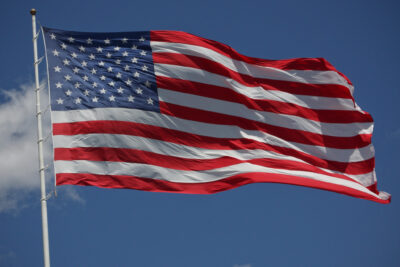This forum explores the white American ritual of Black death. It also ruminates on how scholars of religion reckon with antiblackness as white religion. Whether through Klan rally murder or slow death from environmental racism, Black death manifests the white sanctification of antiblackness and the shedding of Black blood on the altar of white supremacy. By invoking the word “ritual,” or what performance studies scholar Richard Schechner calls “collective memories encoded into actions,” I mean to suggest two things. First, that the US nation-state and its colonial antecedents perform and enact Black death. And second, they do so in order to maintain what legal scholar Cheryl Harris has called “whiteness as property.” The propertized, who are Black, are propertized because accrued Black death with chattel interest is what guarantees that white people live, move, and/or have “being” (Acts 17:28). This sadistic, and equally cannibalistic, engagement with Black flesh has historically been ritualized through its quotidian normalization. Alas, Ida B. Wells-Barnett’s The Red Record, the Civil Rights Congress’s We Charge Genocide, and the Guardian’s The Counted.
Echoes of “This is the Barbecue we had last night” blare the record. Lynching postcards show the depravity of white Christian imaginaries titillated by and committed to consuming Black flesh, as historian Donald G. Mathews has argued in his work on lynching as human sacrifice. Take, eat: this is my body, which is broken for you: this do in remembrance of me (1. Cor. 11:24). White supremacist perversions of the gospel of an Afro-Palestinian Jesus, as the Rev. James Hal Cone argued, and their consumption of Black flesh as communion are, at once, theologically sadistic and socially and culturally regularized. Indeed, there is no “America” without Black captivity, white-on-black sexual terrorism, and the manipulation of scripture, white fictions, and master class legends mapped onto Black sentient beings rendered monstrous, animalistic, nonhuman, and incapable of humanity, as Zakiyyah Iman Jackson has contended. These realities persist amidst “the afterlife of slavery,” as observed by Saidiya Hartman. These psychic conditions and entrancements with Black flesh, Christina Sharpe notes, exist as the slave wades in the murky waters of the wake. That is, as she writes, “. . . living in and with terror in that in much of what passes for public discourse about terror we, Black people, become the carriers of terror, terror’s embodiment, and not the primary objects of terror’s multiple enactments; the ground of terror’s possibility globally.”
Sharpe’s words from 2016 ring loudly in 2020. Since May 26th of that decade-long-year, a day after Minneapolis police murdered George Floyd, Black political organizers and their allies in the United States and globally have mobilized to demand justice for Black people killed at the hands of law enforcement and armed civilians. The Movement for Black Lives emerged initially in the United States under the administration of the nation’s first Black president and has been reinvigorated under the Trump administration. Moreover, during the Covid-19 pandemic, Black people have also disproportionately been affected; victims of both a virus without a cure and police-involved shootings.
These realities notwithstanding, TIME magazine named as finalists for Person of the Year Donald Trump, Joe Biden, Dr. Anthony Fauci and frontline healthcare workers, and, most shockingly, “Racial Justice Movement” (see image below). Trump’s fascist leadership and white supremacist allegiances exacerbated Covid-19-related deaths. And MSNBC represented the “Racial Justice Movement” with a photo of the slain George Floyd. How exactly could all of these individuals be considered equal contenders for the “honor” of “Person of the Year”?

Biko Gray’s essay in this forum on how “whiteness enacts antiblackness as theodicy” gets to the core of this query. As does Rebecca Wilcox’s examination of “distorted mirrors”—or the misuses of Black death and Black suffering in the service of the antiblack Democratic party, of which Biden is now leader. Candace Jordan likewise challenges white and nonblack people of color and those in power to contend with their own ethical dilemmas as they deny the testimonies of the nation’s George Floyds. Indeed, the Black dead and dying do speak, just as Abel’s blood surely cried from the Earth when he was killed by his brother Cain (Genesis 4:10). Laura McTighe’s essay rightly tarries in this space as she, a white scholar of religion, speaks directly to “white siblings” calling on them to attend to the destructive force of whiteness, and its twin antiblackness, through expressed commitments to the project of abolition. Matthew J. Smith, another white scholar of religion, draws upon his research on white Christian reformers from the late nineteenth century to direct white people’s attention to the parallels between their policing of Black people’s lives and homes and that of white colonists.
As the contributors to this forum demonstrate, the study of American religion, and Black religion specifically, is a productive avenue for attending to these queries. The study of Black religion also captures how Black people honor the Black dead and dying in communities offered up as sacrifices by bloodthirsty capitalists and politicians. Kijan Bloomfield’s essay sits at the crux of this reality as she delves deeply and personally into how Black people’s mourning rituals and funerary rites have been disrupted by the pandemic. The dead have not been fully honored, and those grieving have not fully grieved.
Perhaps it is also true that the field of Black religious studies, then, has also not fully grieved the violence experienced at the hands of white scholars of religion. The field’s commitments to antiblackness, initially founded in the era of Jim Crow segregation, persist through “the canonical.” White scholars give credence and legibility to what other white scholars have to say about Black and Indigenous religious traditions. Consider the white anthropologist of the past and present and the trope of the African as “savage” beholden to “the fetish,” or the “heathen,” pillaged, colonized, and in need of Christianization. And, also consider the decades-long “blackfishing” of historian of colonial Africa, Jessica Krug.
With this history in central focus, this forum intentionally assembles emerging and established scholars of religious studies and Black studies to move this conversation forward in new directions and to get at the heart of the matter—the ways in which antiblackness as religion structures the methods of the field of religious studies. To this point, Paul Daniels invokes twentieth-century sage of Black religion Howard Thurman—an almost forgotten figure—and excavates his words from the grave. In his essay, Daniels discusses the civil rights leader’s meditations on the enduring power of state violence and the insurgent ethos of Black religious experiences that ultimately “rupture the symbolic structure of an antiblack world.”
Each of the authors for this forum wade in very murky waters—crossing between this world and the next, between the living and the dead—and they each render Black mourning and anguish sites of inquiry in religious studies. As Joseph R. Winters recently reminded us, “Anguish is both melancholic and ecstatic, kinetic and pessimistic, unhopeful and not hopeless. Anguish is deeply interior and profoundly political (especially when it questions the accepted terms and conditions of politics). Anguish might be called a spiritual virtue but it is not primarily directed toward the good.” The contributors revere anguish—a consequence of the precarity of Black life and the very certain reality of antiblackness, and in their scholarly revering, they sketch new maps for new worlds.













